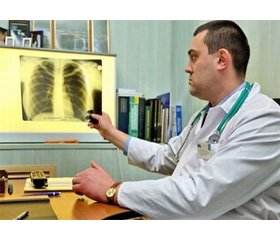Журнал «Медицина неотложных состояний» 7 (62) 2014
Вернуться к номеру
Hospital-acquired pneumonia in neurosurical clinic: local epidemiologic characteristics
Авторы: Birkun A.A.
Рубрики: Медицина неотложных состояний
Разделы: Справочник специалиста
Версия для печати
pneumonia, mortality, multi-resistance, antibacterial therapy.
Background. Hospital-acquired pneumonia (HAP) consistently holds one of the leading positions among the causes of in-hospital morbidity and mortality all over the world. Showing incidence of 5–20 cases per 1,000 admissions, HAP is a second most frequent nosocomial infection with overall mortality rates of 27 to 51 %.
Pulmonary complications, including HAP and ventilator-associated pneumonia (VAP), are known to be important causes of morbidity and mortality in neurosurgical patients. Whereas it is generally recognized that effective prevention and treatment of HAP should be based on detailed knowledge of specific epidemiological pattern in a given medical facility, a prevalence and characteristic features of HAP and VAP in specific neurosurgical clinics are not extensively studied.
The study was aimed to evaluate local epidemiological profile of HAP in one of the leading neurosurgical centers in the southern Ukraine, including HAP incidence, outcomes, range of causative agents and their susceptibility to antibiotics.
Methods. Medical records (n = 4,528) of patients who were withdrawn (discharged/deceased) from one of the major neurosurgical centers in the southern Ukraine from January 2006 to December 2011 were reviewed to identify cases of HAP. A total of 126 cases of HAP (including 99 cases of VAP) were identified in 115 patients. Following data were extracted from the medical records and included in subsequent statistical analysis: age, sex, neurosurgical diagnosis, comorbid conditions, duration of hospital stay, outcome, dates of HAP diagnosis and resolution, date of endotracheal intubation (tracheostomy), bacteriologic data, antimicrobial susceptibility, antimicrobials used, duration of antimicrobial therapy, risk factors for colonization and infection with MDR pathogens according to the ATS & IDSA Guidelines.
Results. HAP was diagnosed in 2.5 % (n = 115) of neurosurgical patients on record. VAP accounted for 77.4 % (n = 89) of HAP cases. The mean age of the patients with HAP was 47 years (range 16–91 years).Predominant causes of neurosurgical center admission for patients with HAP were closed and open craniocerebral injuries.The mean duration of hospital stay for patients with HAP who survived was 42.8 patient-days. There was a relation of longer hospital stay with greater duration of HAP, period from admission till initial HAP diagnosis, period from endotracheal intubation (tracheostomy) till pneumonia diagnosis and duration of antimicrobial therapy prior to HAP diagnosis. Early-onset HAP was diagnosed in 22 % patients. Fatal outcome and recovery were registered for 41.7 % and 37.4 % of HAP patients, respectively.The mean duration of pneumonia for cases of HAP with clinical resolution reached 12.8 days. Pneumonia persisted significantly longer in males as compared with female patients. Bacteriological analysis of sputum and tracheal aspirate (n = 484) was performed in 66 % of patients with HAP. There was no microbial growth in 7 % and 75 % of tracheal and blood cultures, respectively.Overall incidence of MDR-positive cases in patients with HAP was 52 %. Presence of MDR demonstrated no significant influence on the duration of hospital stay and duration of HAP itself. Most commonly encountered MDR bacteria were Pseudomonas aeruginosa and K. pneumoniae (41.7 % and 38.3 % of MDR-positive cases, respectively). P.aeruginosa (26.4 %), exhibited increased resistance to antipseudomonal drugs, namely ciprofloxacin (98 %), ceftazidime (97 %), gentamicin (96 %), cefepime (95 %) and amikacin (92 %). Antimicrobial drugs were utilized prior to HAP diagnosis in 98 % of cases, andthe duration of pre-HAP antibiotic usewas comparable both for MDR-positive and MDR-negative cases.
Conclusions. Overall, the study revealed increased mortality and high incidence of both HAP and VAP in the given neurosurgical facility. Prolonged hospital length of stay was associated with increased duration of HAP and increased duration of antimicrobial therapy prior to HAP diagnosis. Low bacteriologic coverage of HAP cases, high incidence of MDR-positive cases and excessive resistance of P.aeruginosa to the commonly used antipseudomonal agents were also revealed. The results should be utilized to remove shortcomings in local practiceof HAP treatment and microbiologic testing in the neurosurgical center. They also may be helpful for improvement of relevant protocols of medical care in other surgical facilities.

